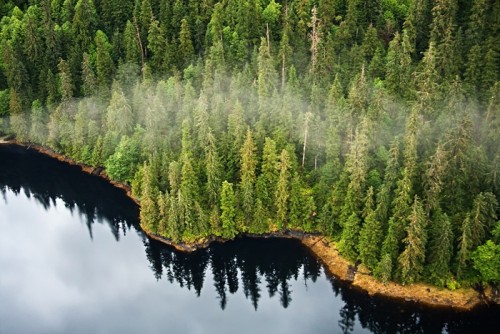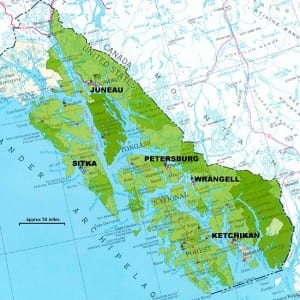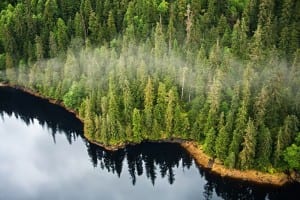The plan to transition to second-growth harvest on the Tongass National Forest was discussed during a Senate Energy Committee hearing Thursday morning in Washington, D.C.
Most of the Senate hearing focused on funding for fighting wildfires, but Alaska Sen. Lisa Murkowski, who chairs that committee, has added a rider that would delay the transition until the U.S. Forest Service has completed a full inventory of young growth stands.
In this exchange with Murkowski, Undersecretary of Natural Resources and Environment Robert Bonnie defended the U.S. Forest Service’s decision to conduct a detailed inventory while also moving forward with an amendment to the Tongass Land Management Plan.
“The inventory that we’re carrying out now will give us information that will allow us to do stand-level projects and other things,” Bonnie said. “I think we have the information we need right now to do a broad plan-level amendment. What the inventory is helpful in doing is it allows us to plan sales.”
Murkowski responded: “The inventory has been recognized as necessary to provide that level of certainty for the plan. The Forest Service recognizes it. The TAC recognizes it. Everyone recognizes that we need to understand what we’re dealing with. Are you going against the TAC recommendation?”
No. I think we’re in line with the TAC recommendation,” Bonnie answered. “They asked us, they were very concerned about implementation. They asked us to move forward with the inventory we’re doing now. As you know, we’re doing it in partnership with the state. So I think we’re very much in keeping with what the TAC has asked.”
The TAC is the Tongass Advisory Committee, a group of volunteers representing the timber industry and environmental groups. The TAC investigated the transition and provided recommendations to the Forest Service on how to make this big change to Southeast Alaska logging practices.
Also testifying during the hearing was Eric Nichols of Alcan Forest Products. He served on the Tongass Advisory Committee as a representative of the timber industry.
Nichols told the Senate committee that TAC members worked hard to make sure there would be a stable supply of old growth trees to harvest during the transition, to make sure mills could continue to operate.
“From the industry side, what I see out there today is that the TAC made some very strong recommendations. They only took part of those recommendations,” he said. “They didn’t take them all. The timber sales they are working on today do not follow the TAC recommendations.”
Nichols said the proposed harvest levels are too low and don’t take into account any potential reduction of that harvest, caused by unanticipated on-the-ground problems that he said often come up.
While timber industry representatives advocate for a slower transition, conservation groups want the Forest Service to move more quickly toward exclusively young growth timber sales.
Peter Nelson with Defenders of Wildlife also testified in front of the Senate committee. He said his group opposes adding Murkowski’s rider to the wildfire funding bill.
“It is inappropriate for Congress to interrupt a robust planning process,” he said. “More than 165,000 individuals and organizations have participated in that effort. The Forest Service has the information it needs to proceed with that amendment and now is the time to transition.”
Murkowski said the rider isn’t meant as a delay tactic.
“My intention is not to delay the plan. My intention is to make sure that that plan is based on true facts on the ground; a true, honest understanding of what that inventory is,” she said at the close of the hearing.
The Wildfire Budgeting, Response and Forest Management Act of 2016 remains under consideration by the Senate committee.









